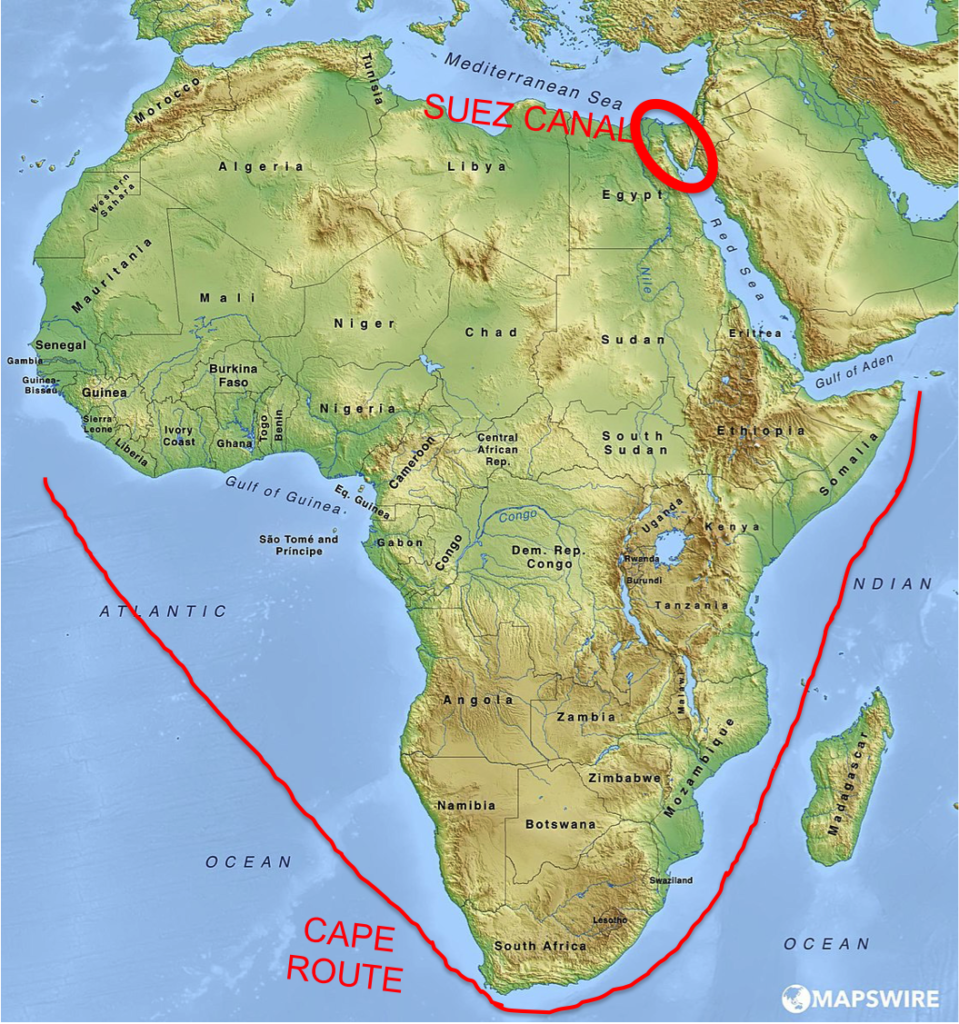Houthi Attack on Ship Kills 3 – Ocean Shipping Balanced “at Maximum Capacity” and Vulnerable
The situation in the Gulf of Aden and Red Sea, forcing ocean freight carriers to route ships away from the Suez Canal, got worse yesterday (Wednesday, March 6th). Antisemitic, Iran-backed Houthi rebels killed three crewmen in a missile attack on yet another merchant ship. It’s amazing that these were the first crew people to die in the months of these terrorist attacks on ships attempting to traverse the Red Sea and Gulf of Aden.

Here are details on the attack from Tom Spender, Joshua Cheetham & Frank Gardner reporting in the BBC:
Three crew members have been killed in a Houthi missile strike on a cargo ship off southern Yemen, its owners and the US say – the first deaths caused by the group’s attacks on merchant vessels.
The Barbados-flagged True Confidence was abandoned after Wednesday’s attack, which inflicted significant damage.
Two of the sailors who died were Filipinos and the other was Vietnamese.
The Houthis say their attacks are in support of the Palestinians in the war between Israel and Hamas in Gaza.
The US military’s Central Command (Centcom) condemned the Houthis’ “reckless attacks”, which it said had “disrupted global trade and taken the lives of international seafarers”.
It seems likely the deaths will further ramp up U.S. and British responses to the Houthi attacks. We’ve already seen air raids in Yemen, targeting Houthi locations. Bombings on Houthi targets have clearly not stopped these terrorist attacks. It’s impossible to know how much of an impact military responses have had at all on the Houthi rebels, especially with the large bankroll Iran has to keep supplying the terrorists.
What is clear is that this situation is not over. Ships need to continue avoiding the area. And there’s no clear end in sight.
Ocean Shipping Balanced But at Capacity and Vulnerable
As we’ve blogged about before in regards to ocean freight carriers having to divert away from the Red Sea, including the use of routes down and around Africa, ocean shipping takes more ships to handle the same amount of cargo and services. Fortunately, carriers came into this situation with overcapacity. Previously, we’d blogged about all the new ships and increases in capacity hitting the waters of international shipping as a potentially bad thing for carriers. It turned into a blessing.
The overcapacity had the potential to put serious downward pressure on freight rates. In fact, it was even starting to do so, but attacks in the Red Sea, especially since they were paired with a drought disrupting the Panama Canal, made the additional ships and capacity a needed commodity.
Unfortunately for shippers, who were finally getting some freight rate relief, freight rates spiked with the violent disruption at the Suez Canal and decrease of traffic that could get through the Panama Canal. However, carriers were able to balance ocean shipping with all the capacity they have available. Improvement at the Panama Canal has helped too. Freight rates have actually come back down a little, though they are still significantly higher than before all this mess started.
Bill Mongelluzzo wrote about this in a Journal of Commerce (JOC) article published today. The article mostly says things I’ve already been writing in recent posts and reiterating in today’s of Universal Cargo’s blog, but then something new caught my attention. Mongelluzzo’s quoted the following from industry analyst and CEO of Vespucci Maritime, Lars Jensen:
“We are at maximum capacity right now.”
All of that previously-seeming overcapacity is apparently in use now. All of it? We’re at maximum capacity? That makes ocean freight shipping, and supply chains across the world, particularly vulnerable to another disruptive event. But Jensen takes it even further than that:
“Another major problem could launch us into pandemic-like problems.”
Is that hyperbole? I hope so because things shipping disruptions and freight rates got out of control after the pandemic hit.
To be clear, I’m sure Jensen is strictly talking in the sense of shipping/supply chain disruption and not including all the other problems that came with the pandemic (and the general poor response to it) when he says “pandemic-like problems.” Similarly, earlier in the article, he was quoted around the topic of the Red Sea disruption as saying, “This is a challenge. It’s not a crisis.” Clearly, he was talking about the international shipping industry having to avoid the region and the industry’s ability to handle that rather than the issues of terrorism and war as being a challenge, not a crisis. So there’s no reason to think he’d be talking about anything larger in scope than the “supply chain crisis” in isolation that came after the pandemic hit.
Even so, that was an incredible amount of disruption. That an industry expert would say we’re one major problem away from a repeat of it is a concerning statement. Unfortunately, “major problem” is rather vague. Is he talking a major event such as China invading Taiwan? That’s a possibility that has been feared for a while and would have enormous ramifications beyond what anyone would likely be able to fully predict. Could a major problem be smaller in scope than another international conflict, such as an ILA strike at U.S. East and Gulf Coast ports? Would a ship getting stuck and completely blocking the Panama Canal for a week be big enough to consider a major problem?
There’s no way to know exactly what the next problem to hit the international shipping industry will be. We do know there’s unpredictability in the very nature of ocean shipping, and while international ocean shipping is balanced right now, it is particularly vulnerable. I would, however, be leery about saying we’re one problem away from falling into “pandemic-like problems.”




